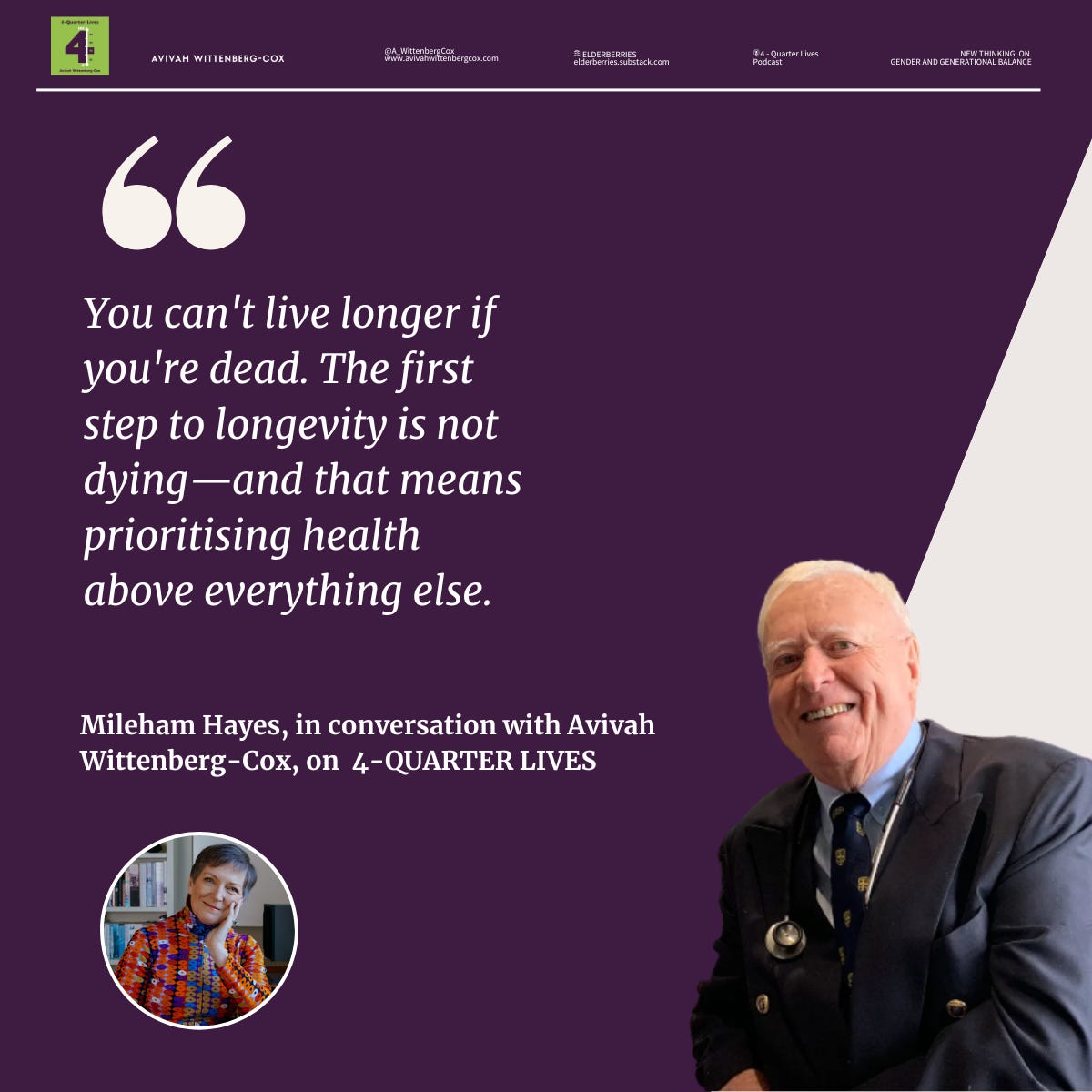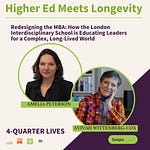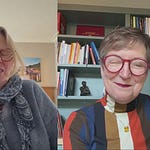Welcome to 4-Quarter Lives, a podcast exploring the profound impact of longer, healthier and more engaged lives, not only for ourselves and our couples, but also for companies and countries. I’m Avivah Wittenberg-Cox, and today, I’m doing a summary of our 9th season of this podcast.
Each season of 4-Quarter Lives feels like a tapestry—woven from voices, visions, and lived experiments in the age of longevity. Season 9 may be the most practical yet: full of builders, architects, and reimagineers of how we live, age, and contribute across life’s 4 Quarters.
Instead of summarising episode by episode, I’ve stepped back to distil the bigger picture. Across ten cool conversations, three conclusions emerged that I believe are shaping the future we need—urgently, optimistically, and globally.
Longevity is Inspiring a New Generation of Products & Services
One of the clearest patterns to emerge this season was the burst of creativity in the longevity economy—services that meet both the challenges and possibilities of longer lives.
There’s a beautiful throughline here: that midlife and later life are not just about winding down, but winding differently. These new services are creating options for housing, purpose, income, and legacy—often in deeply intergenerational ways.
Lisa Goldsobel’s work at Two Generations was a standout. Matching older homeowners with younger renters is more than a housing fix—it’s a loneliness solution, a purpose-provider, and an empathy engine.
Laurie Kilby reminded us that fostering isn’t just for the young. An innovative new platform, Now Foster, inspired by Now Teach founder Katie Waldegrave, taps into the experience and spaciousness of midlife to invite people to support children in care—through flexible roles that are redefining what caregiving can look like - one weekend a month.
Farah Baxter and Ignacio Moreno reframe legacy as something emotional and accessible. Their platform, Soalma, helps people record and share their stories, values, and advice (as well as admin details and paperwork)—a kind of “emotional will” that may turn out to be more lasting than any financial or legal one.
Julianne Miles runs Career Returners, and her new book Return Journey shares the lessons of thousands of people who’ve gone back to work after an extended break. As lives and careers lengthen, we’ll need more breaks, more returns and a better understanding of how to manage it all. For both individuals and companies. Here, she shares her summary view.
Neeraj Sagar’s WisdomCircle is a professional headhunter’s mature passion project. It connects retirees with companies and causes that value their insights. It’s a quiet revolution in how we value age, experience, and time. A placement platform that values wisdom and experience, not screens it out with AI. And supported by some of the top people in the business.
These aren’t fringe ideas—they’re scalable, smart, and deeply human. And they share a philosophy I deeply believe in: that connection is the gift - and essential survival skill - of longevity.
Conclusion: Intergenerational design isn’t just nice—it’s necessary. Longevity done well serves - and benefits - all ages.
It’s Not Just Lifespan. It’s Also Healthspan—and Fullspan.
This season deepened my conviction that living longer isn’t the point, despite billions being invested to do just that. The goal is simpler and a lot cheaper. Live better, longer. And to do that, we need new definitions, new metrics, and new mindsets.
Three guests stood out in shaping this thinking:
Richard Leider, a global pioneer in ‘purpose’ coaching, reminded us that meaning is a biological imperative. Purpose doesn’t just extend our years—it enriches them. And it’s most powerful when it’s practical, everyday, and shared. And it doesn’t have to have a capital ‘P.’
Melinda Blau, with her signature blend of warmth and research, reframed ageing as a relational journey. It’s not about the family you’re born into, but the “wisdom friends” you cultivate. She shares her latest book, The Wisdom Whisperers, showcasing her deep friendships with nine ‘old ladies’ who taught her how to age.
Mileham Hayes brought the physician’s lens—one sharpened by decades in cardiac care. His message was sobering but hopeful: most of the major killers in older age are preventable. But only if we start testing and treating risk early and personally. So he shares what is most likely to kill you in every decade and what tests you should run to prevent that happening to you.
Together, they drew a new kind of longevity triangle: Purpose. Prevention. People. The three “Ps” of fullspan health.
Conclusion: We must stop treating ageing as a condition to be endured and start designing for energy, connection, and meaning at every stage.
To Matter, Longevity Must Be Local—and Global
The final message of the season took us beyond the West—and into the rich, diverse realities of aging in the Global South. We often talk about longevity as if it’s only happening in wealthy countries. But the data says otherwise—and so do our guests.
Saher Mehdi, a molecular biologist turned health entrepreneur in India, is creating AI-guided diagnostics specifically for women. Her work on biological age is brilliant—but her motivation is even more striking. She’s filling a gap that most Western systems barely acknowledge: affordable, gender-informed longevity care in low-resource settings.
Maria Clara Pinheiro, who leads Ashoka’s longevity work in India, showed how older adults are being empowered not through government policy, but social innovation. She highlighted grassroots leaders—from grandmother-led mental health programmes in Zimbabwe to intergenerational educators in Brazil—who are reframing age as an asset.
Their work reminded me that ageing may be universal, but the solutions must be rooted in culture, context, and equity. Longevity is not just a science—it’s a social contract.
Conclusion: The future of aging is not one-size-fits-all. It’s local, lived, and deeply varied. Listening is the first act of innovation.
Where Do We Go From Here?
Looking back on Season 9, what struck me most was how tangible it all felt. These weren’t just ideas. They were already becoming reality. Quietly, bravely, and beautifully.
If Season 8 explored the demographic disruption, Season 9 revealed the builders. People crafting new scaffolding for longer lives: services, tools, mindsets, and movements that meet the realities of Q3 and Q4 with grace and ambition.
So what are we left with?
A reframing of ageing as something profoundly creative.
A call to think beyond “lifespan” toward “fullspan.”
And a reminder that if we design this right, longevity could be not just an extension—but an expansion.
What are you building for your next quarter?
We’ll be back in the fall with Season 10. I’ll be featuring the Directors of many of the world’s leading midlife transition programmes in top universities - from Harvard’s ALI, Stanford’s DCI to Oxford and Cambridge’s more recent additions. If ever you’re tempted by some later life educational breaks, this one will be for you.
Until then—stay curious, stay connected, and keep designing a life, and a Quarter, that fits who you are becoming.
You can find Season 9 on a phone near you, on any podcast platform, or right here on Substack.



















